1mg
Showing 4551–4600 of 7910 results
-

GenCRISPR™ Cas12a (Cpf1) Nuclease
$1,060.01 Add to cart View Product DetailsThe
clustered regularly interspaced short palindromic repeats, known as CRISPR systems are adaptive immune mechanisms commonly
present in archaea and bacteria. The CRISPR systems enable the host to specifically
target and cleave foreign nucleic acids thus targeting infectiousviruses and
plasmids. Recently, a type V CRISPR system has been identified in several
bacteria, the Cpf1 CRISPR from Prevotella and Francisella 1. In contrast to
Cas9 systems, CRISPR/Cpf1 systems are smaller in size, do not require an
additional trans-activating crRNA (tracrRNA), and allow for targeting of
additional genomic regions by cleaveing the target DNA proceeded by a short
T-rich protospacer-adjacent motif (PAM). On the other hand, the Cas9 system requires
a G-rich PAM following the target DNA. Furthermore, Cas12a/Cpf1 introduces a
staggered DNA double stranded break with a 4 or 5-nt 5’ overhang. Recombinant
Acidaminococcus sp. BV3L6 Cas12a (cpf1) nuclease is expressed in E. coli and
purified. The nuclease contains nuclear localization sequence (NLS) at the
C-terminus and 6× His-tag at the C-terminus. -

GenCRISPR™ Cas13a (C2c2) Nuclease
$1,060.01 Add to cart View Product DetailsGenCRISPR Cas13a (C2c2) Nuclease is an RNA-guided, RNA-targeting CRISPR enzyme, commonly referred to as C2c2. This enzyme is a member of Type VI CRISPR family containing a single protein effector with two HEPN domains. The Cas13a exhibits two RNase activities. The first activity, a cis- sequence-specific RNA guided cleavage, activates the secondary RNase activity of the enzyme, a non-specific trans- ribonuclease activity. This Cas13a protein can be applied to detect single RNA molecules with proven high specificity.
-

GenCRISPR™ Cas9 v1.1
$884.06 Add to cart View Product DetailsThe GenCRISPR™
Cas9 v1.1 can be formed
with the guide RNA into a ribonucleoprotien (RNP) complex. The use of an RNP
complex to perform gene editing has been shown to reduce the challenges
encountered with other CRISPR gene editing techniques such as viral and plasmid
delivery. Challenges include off-target effects, cell viability and transcription/translational
challenges.
GenCRISPR™
Cas9 v1.1 is a tag free nuclease produced by expression in an E. coli strain carrying a plasmid
encoding the Cas9 gene from Streptococcus
pyogenes with a biparticle nucleus localization signal (BPNLS) at both
N-terminal and C-terminal. It has been reported that BPNLS is able to improve
the gene editing efficiency. -

GenCRISPR™ Cas9 v1.2
$884.06 Add to cart View Product DetailsThe GenCRISPR™
Cas9 v1.2 can be formed
with the guide RNA into a ribonucleoprotien (RNP) complex. The use of an RNP
complex to perform gene editing has been shown to reduce the challenges
encountered with other CRISPR gene editing techniques such as viral and plasmid
delivery. Challenges include off-target effects, cell viability and transcription/translational
challenges.
GenCRISPR™ Cas9 v1.2 is a tag
free nuclease produced by expression in an E.
coli strain carrying a plasmid encoding the Cas9 gene from Streptococcus pyogenes with a biparticle
nucleus localization signal (BPNLS) at N-terminal and a nucleoplasmin nucleus
localization signal (nucleoplasmin NLS) at C-terminal. It has been reported
that BPNLS and nucleoplasmin NLS are able to improve the gene editing
efficiency. -

GenCRISPR™ ErCas12a Nuclease
$1,060.01 Add to cart View Product DetailsGenCRISPR™ ErCas12a Nuclease is an RNA-guided DNA endonuclease from Eubacterium rectale. It recognizes a T-rich protospacer adjacent motif (PAM) and results in a staggered DNA double-strand break (DSB). After the specific cleavage, Cas12a can also activate collateral cleavage activity towards adjacent non-specific ssDNA sequences. Hence, Cas12a nuclease is a good alternative for Cas9 in certain target DNA editing, and provides a novel strategy for DNA detection.
-

GenCRISPR™ LbuCas13a Nuclease
$1,060.01 Add to cart View Product DetailsGenCRISPR™ LbuCas13a Nuclease is an RNA-guided, RNA-targeting CRISPR enzyme, commonly referred to as LbuC2c2. This Cas13a protein can be applied to detect single RNA molecules with proven high specificity. Recently, Cas13a has been leveraged as a diagnostic nucleic acid detection tool.
-

GenCRISPR™ SaCas9 2NLS Nuclease
$884.06 Add to cart View Product DetailsThe GenCRISPR™
SaCas9 2NLS Nuclease can be formed with the guide RNA into a ribonucleoprotien
(RNP) complex. The use of an RNP complex to perform gene editing has been shown
to reduce the challenges encountered with other CRISPR gene editing techniques
such as viral and plasmid delivery. Challenges include off-target effects, cell
viability and transcription/translational challenges. The SaCas9 recognizes an
NNGRRT protospacer adjacent motif (PAM) and cleaves target DNA at high
efficiency with a variety of guide RNA (gRNA) spacer lengths.
GenCRISPR™ SaCas9 2NLS
Nuclease is a tag free nuclease produced by expression in an E. coli strain carrying a plasmid
encoding the Cas9 gene from Staphylococcus
aureus with a nuclear localization signal at both N-terminal and C-terminal.The
small size of the nuclease facilitates enhanced in vivo delivery for genome
editing in various organisms. -

GenCRISPR™ Ultra eSpCas9-2NLS-basic GMP
$1,461.94 Add to cart View Product DetailsGenCRISPR™ Ultra eSpCas9-2NLS-basic GMP is utilized for CRISPR gene editing applications. The Cas9 nuclease forms a stable ribonucleoprotein (RNP) complex with the guide RNA (gRNA) component. With the help of two nuclear localization signals (NLS) expressed with the Cas9 nuclease, the RNP complex enters the nucleus and cleaves target gene. When compared with a plasmid-based delivery system, the RNP delivery system has been observed to increase the on-target gene editing efficiency and decrease off-target effects.
-

GenCRISPR™ Ultra eSpCas9-2NLS-Research
$1,116.94 Add to cart View Product DetailsThe GenCRISPR™
Ultra eSpCas9 product line provides customers with a selection of research use,
basic GMP and GMP compliant Cas9 nucleases. The Cas9 protein can be formed with
the guide RNA into a ribonucleoprotien (RNP) complex. The use of an RNP complex
to perform gene editing has been shown to reduce the challenges encountered
with other CRISPR gene editing techniques such as viral and plasmid delivery.
Challenges include off-target effects, cell viability and transcription/translational
challenges.
GenCRISPR™
Ultra eSpCas9-2NLS is a mutant form of Cas9 nuclease and is produced by
expression in an E. coli strain
carrying a plasmid encoding the eSpCas9 gene from Streptococcus pyogenes with double-ended nuclear localization
signal (NLS). GenCRISPR™ Ultra eSpCas9-2NLS delivers higher fidelity and less
off-target activity than wild-type SpCas9 nuclease. -

GenCRISPR™ Ultra eSpCas9-N-NLS Research, tag-free
$1,116.94 Add to cart View Product DetailsThe GenCRISPR™
Ultra eSpCas9 product line provides customers with a selection of research use,
basic GMP and GMP compliant Cas9 nucleases. The Cas9 protein can be formed with
the guide RNA into a ribonucleoprotien (RNP) complex. The use of an RNP complex
to perform gene editing has been shown to reduce the challenges encountered
with other CRISPR gene editing techniques such as viral and plasmid delivery.
Challenges include off-target effects, cell viability and transcription/translational
challenges.
GenCRISPR™ Ultra eSpCas9-N-NLS
Research, tag-free is a mutant form of Cas9
nuclease and is produced by expression in an E. coli strain carrying a plasmid encoding the eSpCas9 gene from Streptococcus pyogenes with an N-terminal
nuclear localization signal (N-NLS). GenCRISPR™ Ultra eSpCas9-N-NLS Research,
tag-free delivers higher fidelity
and less off-target activity than wild-type SpCas9 nuclease. -

GenCRISPR™ Ultra NLS-Cas9-basic GMP
$1,461.94 Add to cart View Product DetailsGenCRISPR™ Ultra NLS-Cas9-basic GMP is utilized for CRISPR gene editing applications. The Cas9 nuclease forms a stable ribonucleoprotein (RNP) complex with the guide RNA (gRNA) component. With the help of nuclear localization signal (NLS) expressed with the Cas9 nuclease, the RNP complex enters the nucleus and cleaves the target gene. When compared with a plasmid-based delivery system, the RNP delivery system has been observed to increase the on-target gene editing efficiency and decrease off-target effects.
-

GenCRISPR™ Ultra NLS-Cas9-Research
$1,004.81 Add to cart View Product DetailsThe
GenCRISPR™ Ultra Cas9 product line provides customers with a selection of
research use, GMP preclinical and GMP compliant Cas9 nucleases. The Cas9
protein can be formed with the guide RNA into a ribonucleoprotien (RNP)
complex. The use of an RNP complex to perform gene editing has been shown to
reduce the challenges encountered with other CRISPR gene editing techniques
such as viral and plasmid delivery. Challenges include off-target effects, cell
viability and trascprition/translational challenges.
GenCRISPR™ Ultra Cas9 is
produced by expression in an E. coli
strain carrying a plasmid encoding the Cas9 gene from Streptococcus pyogenes with an N-terminal nuclear localization
signal (NLS). -

Genfatinib-d3 (Imatinib-d3)
$226.84 Add to cart View Product DetailsMolecular Formula : C29 D3 H28 N7 O
-

Genistein 7-Beta-D-Glucuronide 4’-Sulfate Disodium Salt
$436.43 Add to cart View Product DetailsMolecular Formula : C21H16Na2O14S
-

Genistein-2’,3’,5’,6’-d4 (Major)
$213.04 Add to cart View Product DetailsMolecular Formula : C15 2H4 H6 O5
-
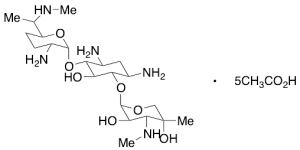
Gentamicin C1 Pentaacetate Salt
$282.04 Add to cart View Product DetailsMolecular Formula : C21H43N5O7.5C2H4O2
-
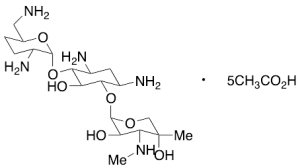
Gentamicin C1a Pentaacetate Salt
$155.25 Add to cart View Product DetailsMolecular Formula : C29H59N5O17
-

Gentamicin C2 Pentaacetate Salt (2 : 1 Mixture of C2 and C2a)
$282.90 Add to cart View Product DetailsMolecular Formula : C20 H41 N5 O7 . 5 C2 H4 O2
-
Gentamicin Deuterated (C Complex) Pentaacetate Salt (Contains d0)
$243.23 Add to cart View Product DetailsMolecular Formula : No Data Available
-
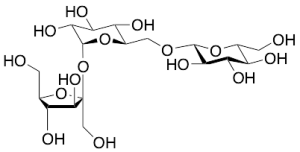
Gentianose
$79.35 Add to cart View Product DetailsMolecular Formula : C18 H32 O16
-

Geranylgeraniol-d5 (major)
$176.81 Add to cart View Product DetailsMolecular Formula : C20H29D5O
-

Germacrene D
$240.64 Add to cart View Product DetailsMolecular Formula : C15H24
-

Gestodene Sulfate Pyridinium Salt (>85%)
$132.83 Add to cart View Product DetailsMolecular Formula : C21 H25 O5 S . C5 H6 N
-
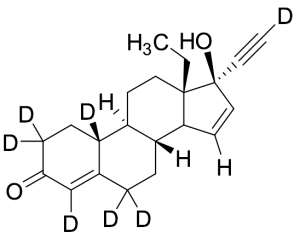
Gestodene-d7
$244.09 Add to cart View Product DetailsMolecular Formula : C21 D7 H19 O2
-

GF 109203X
$90.56 Add to cart View Product DetailsMolecular Formula : C25 H24 N4 O2
-
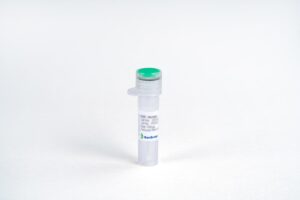
GH, Human
$181.13 Add to cart View Product DetailsGrowth Hormone (GH) is a member of the somatotropin/prolactin family which play an important role in growth control. The human GH cDNA encodes a 217 amino acid (aa), and the first 26 aa is a signal peptide. By alternative splicing, at least four isoforms of GH have been identified. The major role of GH in stimulating body growth is to stimulate the liver and other tissues to secrete IGF-1. GH stimulates both the differentiation and proliferation of myoblasts, and also stimulates amino acid uptake and protein synthesis in muscle and other tissues.
-
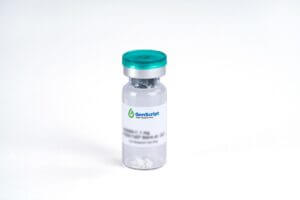
GH, Human(CHO-expressed)
$2,117.44 Add to cart View Product DetailsGrowth Hormone (GH) is a member of the somatotropin/prolactin family which play an important role in growth control. The human GH cDNA encodes a 217 amino acid (aa), and the first 26 aa is a signal peptide. By alternative splicing, at least four isoforms of GH have been identified. The major role of GH in stimulating body growth is to stimulate the liver and other tissues to secrete IGF-1. GH stimulates both the differentiation and proliferation of myoblasts, and also stimulates amino acid uptake and protein synthesis in muscle and other tissues.
-

GH, Mouse
$1,776.75 Add to cart View Product DetailsGrowth Hormone (GH), is a member of the somatotropin / prolactin family of hormones which play an important role in growth control. The gene, along with four other related genes, is located at the growth hormone locus on chromosome 17 where they are interspersed in the same transcriptional orientation; an arrangement which is thought to have evolved by a series of gene duplications. The five genes share a remarkably high degree of sequence identity. Alternative splicing generates additional isoforms of each of the five growth hormones, leading to further diversity and potential for specialization. This particular family member is expressed in the pituitary but not in placental tissue as is the case for the other four genes in the growth hormone locus. Mutations in or deletions of the gene lead to growth hormone deficiency and short stature.
-
Ghrelin (human) Trifluoroacetic Acid Salt
$138.86 Add to cart View Product DetailsMolecular Formula : C149H249N47O42 . x(C2HF3O2)
-
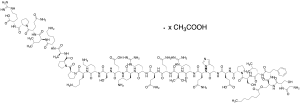
Ghrelin Acetate
$313.09 Add to cart View Product DetailsMolecular Formula : C149H249N47O42 . x(CH3COOH)
-
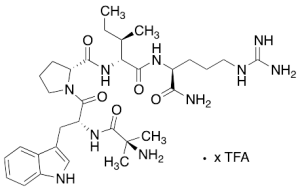
GHRP 3 TFA Salt
$56.93 Add to cart View Product DetailsMolecular Formula : C32H50N10O5 . xC2HF3O2
-

GHRP 4 TFA Salt
$118.16 Add to cart View Product DetailsMolecular Formula : C34H37N7O4 .xC2HF3O2
-
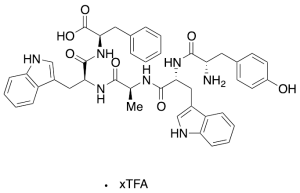
GHRP-5 TFA Salt
$118.16 Add to cart View Product DetailsMolecular Formula : C43H45N7O7 .xC2HF3O2
-

Gibberellic Acid-13C,d2 (90%)
$553.73 Add to cart View Product DetailsMolecular Formula : 13C C18 D2 H20 O6
-
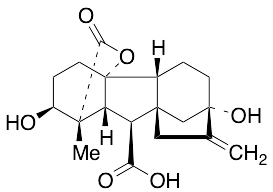
Gibberellin A1
$113.85 Add to cart View Product DetailsMolecular Formula : C19 H24 O6
-
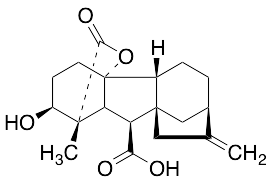
Gibberellin A4
$222.53 Add to cart View Product DetailsMolecular Formula : C19 H24 O5
-
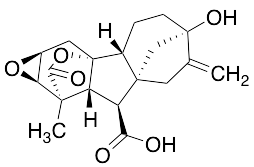
Gibberellin A6
$1,081.58 Add to cart View Product DetailsMolecular Formula : C19H22O6
-
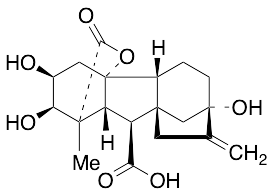
Gibberellin A8
$215.63 Add to cart View Product DetailsMolecular Formula : C19 H24 O7
-
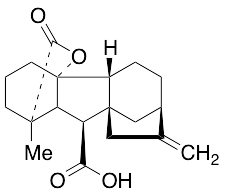
Gibberellin A9
$263.93 Add to cart View Product DetailsMolecular Formula : C19H24O4
-

Ginsenoside Rd
$61.24 Add to cart View Product DetailsMolecular Formula : C48 H82 O18
-
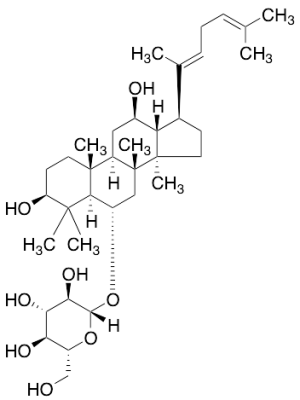
Ginsenoside Rh4
$166.46 Add to cart View Product DetailsMolecular Formula : C36H60O8
-

Gitoxin
$199.24 Add to cart View Product DetailsMolecular Formula : C41 H64 O14
-

GITR Ligand Fc Chimera, Human
$1,293.75 Add to cart View Product DetailsGITR Ligand, also known as TNFSF18 and TL6, is an approximately 30 kDa type II transmembrane glycoprotein in the TNF superfamily (1). Human GITR Ligand consists of a 50 amino acid cytoplasmic domain, a 21 aa transsmembrane segment, and a 128 aa extracellular domain (ECD). Within the ECD, human GITR Ligand shares 56% and 60% aa sequence identity with mouse and rat GITR Ligand, respectively. TNFSF18 is expressed at high levels in the small intestine, ovary, testis, kidney and endothelial cells. GITRL/TNFSF18 is up-regulated after stimulation by bacterial lipopolysaccharides (LPS). TNFSF18 Can function as costimulator and lower the threshold for T-cell activation and T-cell proliferation. TNFSF18 / GITR Ligand is important for interactions between activated T-lymphocytes and endothelial cells.Recombinant Human GITR Ligand Fc Chimera produced in HEK293 cells is a polypeptide chain containing 359 amino acids with the C-termimal human IgG1 Fc fragment. A fully biologically active molecule, rhGITRL has a molecular mass of 50 kDa analyzed by reducing SDS-PAGE and is obtained by chromatographic techniques at GenScript.
-
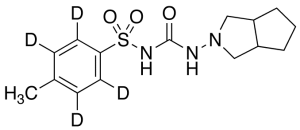
Gliclazide-d4
$169.05 Add to cart View Product DetailsMolecular Formula : C15 2H4 H17 N3 O3 S
-
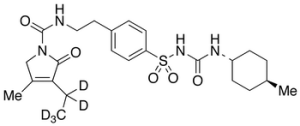
Glimepiride-d5
$255.30 Add to cart View Product DetailsMolecular Formula : C24H29D5N4O5S
-

Gliotoxin
$185.44 Add to cart View Product DetailsMolecular Formula : C13 H14 N2 O4 S2
-
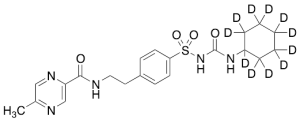
Glipizide-d11
$169.91 Add to cart View Product DetailsMolecular Formula : C21 D11 H16 N5 O4 S
-
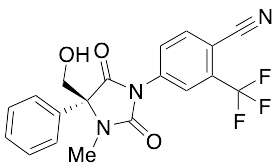
GLPG-0492
$298.43 Add to cart View Product DetailsMolecular Formula : C19H14F3N3O3
-
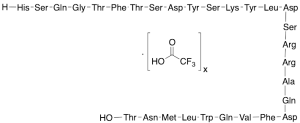
Glucagon Trifluoroacetic Acid Salt
$94.01 Add to cart View Product DetailsMolecular Formula : C153H225N43O49S . x(C2HF3O2)
-

Glucagon-d9 Trifluoroacetate
$357.94 Add to cart View Product DetailsMolecular Formula : C153H216D9N43O49S x(C2HF3O2)






